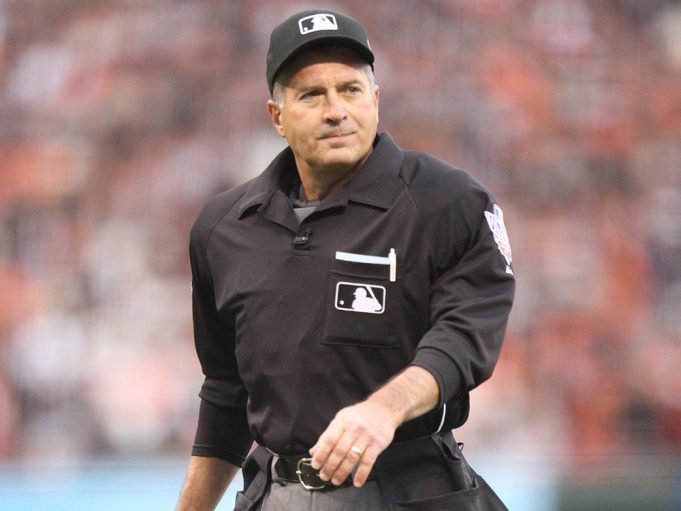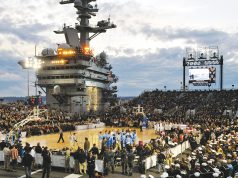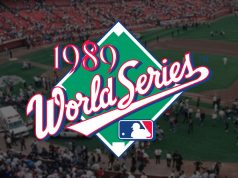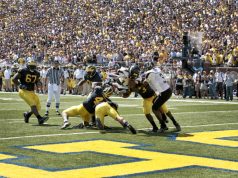It is Oct. 6, 2010, at Citizens Bank Park in Philadelphia. The Phillies are facing the Cincinnati Reds in the first game of a best-of-five NL Division Series. Roy Halladay is pitching for Philadelphia and John Hirschbeck is umpiring home plate.
Hirschbeck can tell early in the game that Halladay has his best stuff. But he doesn’t realize that Halladay is pitching a no-hitter until he looks at the scoreboard after the fifth inning.
“Just keep doing what you’re doing,” Hirschbeck tells himself. “Don’t change anything. Don’t let it come down to anything you do.”
Hirschbeck, now 64 and still spending summers in North Lima, Ohio, says he doesn’t feel any extra pressure because of the possible no-hitter. He believes he is having a good game, too. “I was seeing the ball well,” he says.
The drama of a playoff provides all the pressure Hirschbeck needs to be sharp. “There’s a difference between a spring training game and a regular-season game, and a regular-season game and a playoff game,” he says. “Everything gets turned up a little bit. You try not to get amped up with the crowd.”
Halladay’s chance at a perfect game ends when Cincinnati’s Jay Bruce walks in the fifth inning on a 3-2 pitch. It is the Reds’ only baserunner of the game.
The Reds’ Brandon Phillips is the final batter in the ninth inning. He hits a tapper in front of the plate. Phillies catcher Carlos Ruiz fields the ball and throws out Phillips at first.
“I was prepared to call interference,” says Hirschbeck. “(Phillips) ran out of the 45-foot lane on the infield grass.” But Ruiz makes the play on Phillips. No need to make the interference call. The Phillies win, 4-0. The no-hitter is only the second in playoff history, joining the perfect game the Yankees’ Don Larsen threw in the 1956 World Series. Halladay throws 25 of 28 first-pitch strikes and 104 pitches total. The game is completed in a delightful two hours and 34 minutes.
There is more to this day for Hirschbeck than the no-hitter. He receives a call from his Cleveland Clinic doctor that morning before the game telling him that he has prostrate cancer. He has already survived a bout with testicular cancer the year before when he has his right testicle removed.
“I couldn’t do anything about it (right away),” he says. “I tried to tell myself I’m not going to worry about it unless it’s something (serious). I will take care of it after the season.”
Hirschbeck’s son, Michael, 22 at the time, makes the trip with him to Philadelphia. He often travels with his father to games around the Northeast. When Michael is younger, he sometimes serves as a batboy for one of the teams.
The no-hitter is one of those special father-son days that neither will forget. Michael Hirschbeck passed away in 2014 from ALD, the second son that John lost to the disease.
After the game Hirschbeck asks the umpires’ clubhouse guy to get Halladay to autograph a picture from the game. Halladay does it willingly.
Halladay, who died in a plane crash in 2018, makes Hirschbeck’s job easy. “He threw strikes,” Hirschbeck said. “I was a pitcher’s umpire. I could call a ball, a strike. Never call a strike, a ball. I was consistent. I had the same strike zone all the time.”
It was the only time Hirschbeck worked home plate for a no-hitter. He was at first base when the Yankees’ David Wells threw a perfect game against Minnesota in 1998 and on the field for two of Nolan Ryan’s no-hitters.
Hirschbeck was also behind the plate when Barry Bonds hit his 756th career home run, surpassing Henry Aaron. He retired after working the 2016 World Series between the Chicago Cubs and Cleveland Indians, his third World Series and his 34th year in Major League Baseball.
“I was fortunate,” he says. “It’s fun when you look back.”
What's Your Call? Leave a Comment:
Note: This article is archival in nature. Rules, interpretations, mechanics, philosophies and other information may or may not be correct for the current year.
This article is the copyright of ©Referee Enterprises, Inc., and may not be republished in whole or in part online, in print or in any capacity without expressed written permission from Referee. The article is made available for educational use by individuals.



















